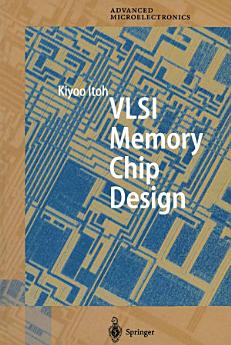VLSI Memory Chip Design
abr 2013 · Springer Series in Advanced Microelectronics Libro 5 · Springer Science & Business Media
5.0star
2 opinionesreport
Libro electrónico
495
Páginas
reportLas calificaciones y opiniones no están verificadas. Más información
Acerca de este libro electrónico
The VLSI memory era truly began when the first production of semiconduc tor memory was announced by IBM and Intel in 1970. The announcement had a profound impact on my research at Hitachi Ltd. , and I was forced to change fields: from magnetic thin film to semiconductor memory. This change was so exceptionally sudden and difficult, I feIt like a victim of fate. Looking back, however, I realize how fortunate I was. I have witnessed an unprecedented increase in memory capacity (DRAM, for example, has had a 6-order increase in the last three decades - from the 1-Kb level in 1970 to the 1-Gb level today). I have contributed to this progress with full involvement in memory-chip development over my career. Such rapid progress would have been impossible without many of the inventions and innovative technologies, and without the effort of many talented people. Unfortunately, few systematic books on memory-chip design have been written by experts. Tliis is a result of two factors: the difficulty of involving university professors because of rapidly changing technology requiring huge investments and development resources, and a shortage of time on the part of chip designers in industry due to severe competition in the memory-chip business. Therefore, LSI memory-chip design has been isolated from the outside, preventing a deeper understanding of the technology. This book is based on my 30-year memory-chip (particularly DRAM) design career.
Calificaciones y opiniones
5.0
2 opiniones
Califica este libro electrónico
Cuéntanos lo que piensas.
Información de lectura
Smartphones y tablets
Instala la app de Google Play Libros para Android y iPad/iPhone. Como se sincroniza de manera automática con tu cuenta, te permite leer en línea o sin conexión en cualquier lugar.
Laptops y computadoras
Para escuchar audiolibros adquiridos en Google Play, usa el navegador web de tu computadora.
Lectores electrónicos y otros dispositivos
Para leer en dispositivos de tinta electrónica, como los lectores de libros electrónicos Kobo, deberás descargar un archivo y transferirlo a tu dispositivo. Sigue las instrucciones detalladas que aparecen en el Centro de ayuda para transferir los archivos a lectores de libros electrónicos compatibles.







